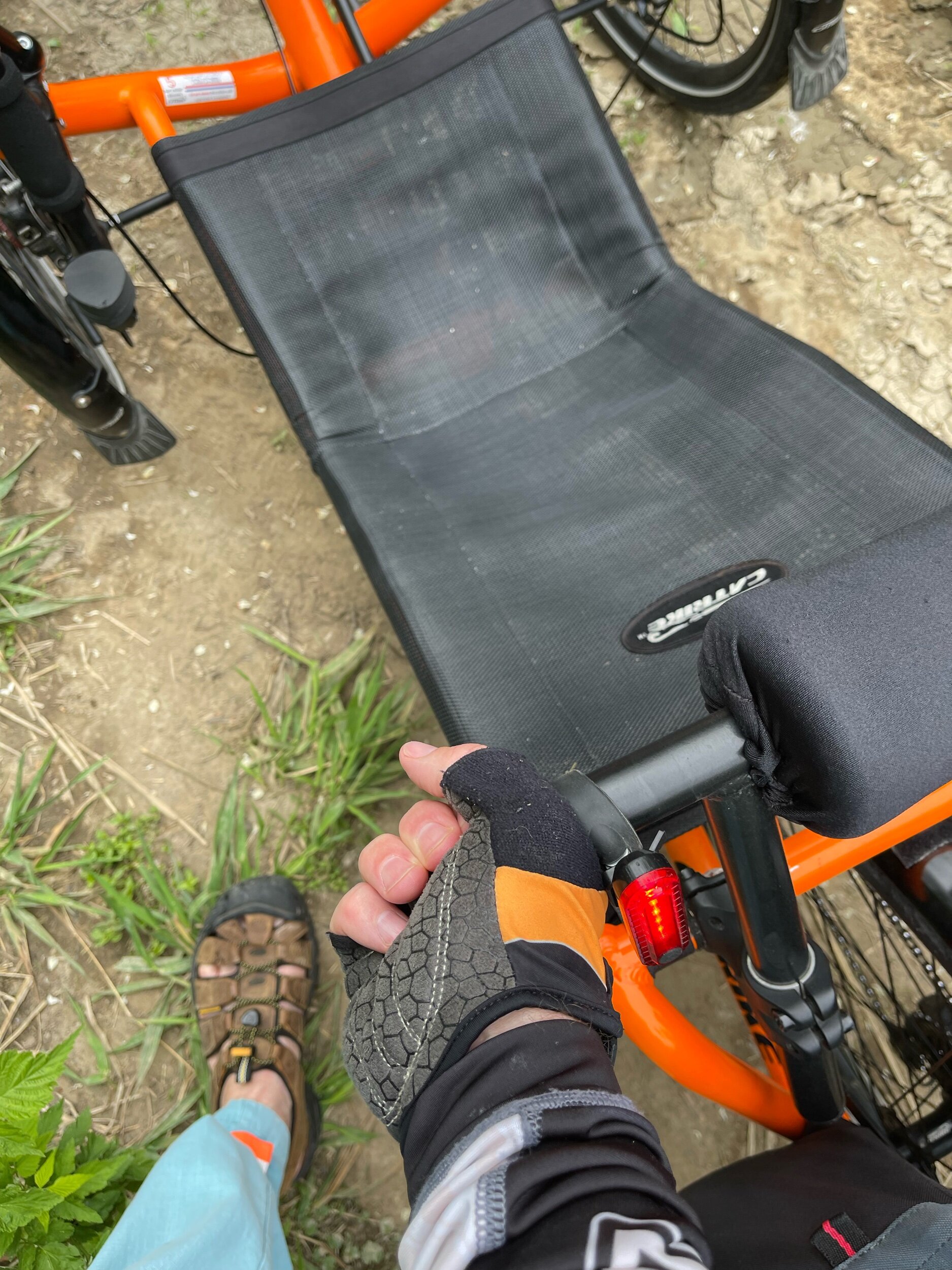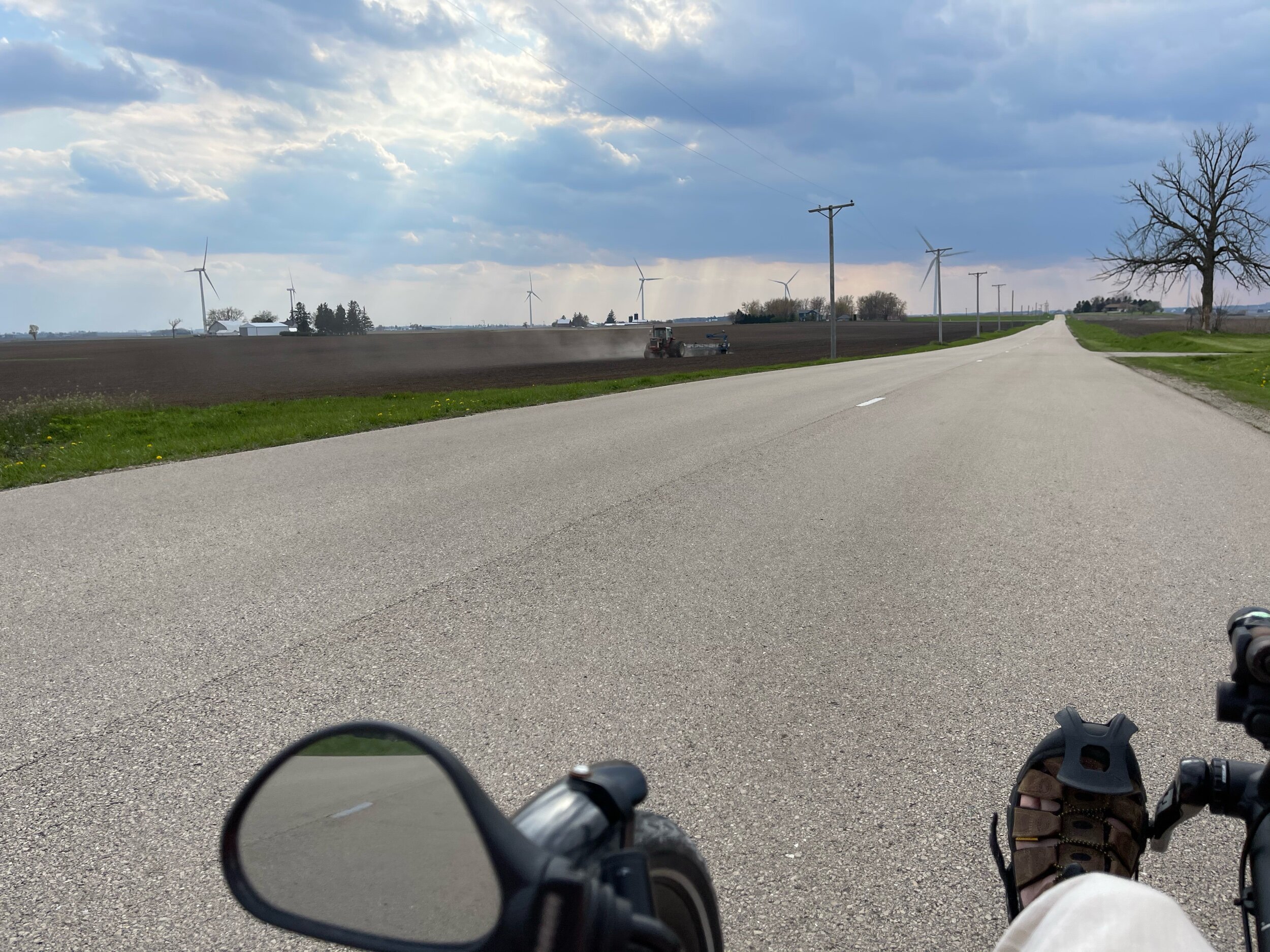At over 80 miles in length, the I&M Canal Trail offers a lot of territory to explore here in Northern Illinois. For myself, I’ve ridden various distances across the western section of the trail, between LaSalle and Ottawa, finally getting the opportunity to ride the entire distance between the two cities this spring.
The trailhead in LaSalle is only about a half-hour from home, which makes it an attractive starting point for a rider who mostly just takes out of his driveway. But, as sometimes happens, I had to travel eastward for other purposes, so I took the trike along in case the opportunity for a ride presented.
As luck would have it, the opportunity was quite cooperative, and I found myself in the vicinity of the Brandon Road Lock and Dam entrance to the canal trail. This point of trail access is sited in the comparatively tiny town of Rockdale, just south of Joliet. I’d never been to this particular part of the trail or, frankly even heard of Rockdale, so I wasn’t sure what to expect. What I found was what felt like a somewhat remote industrial area. When I saw the small parking lot it helped that I knew what I was looking for, because it was immediately obvious that there was a canal there until I opened the door of the car and heard the water rushing.
And it does rush here, which is not true everywhere along the canal. There are several miles of the canal in other portions where the waterway itself has since silted in. In those portions you can usually - but not always - tell where the canal used to be, but only because you know that it used to be there. It makes you a little more aware that Mother Nature did not intend for this waterway to be present and, without human intervention, she has a tendency to put things aright as she sees they should be.
Enjoying this post? Check out our Cycling page for links to other cycling articles on Applied Life
But that’s not the case at the Brandon Road site. In fact, tho I didn’t notice it before I started out - in too big a hurry to just get riding, I think - there’s a spillway of sorts right at this site (perhaps part of the system for the newer canal that replaced the I&M) that accounts for all of the rushing sound. And this all means that, for this section of the trail you are afforded the sort of views that come with riding along the water:
It also offers up the type of wetland wildlife you might expect. Probably my favorite sight was the Snowy Egret (I think - it was white and heron shaped) that I saw both in flight and standing on the bank. It was shy of the camera (or perhaps I was just too slow and clumsy to capture it), so I wasn’t able to capture its image. But I did see plenty of these guys:
I came across them in a large flock within the first half-mile or so of the ride. I figured they would simply peel off into the water as I approached.
They did not. In fact, what they chose to do was run away from me, straight down the trail in the same direction of travel. I slowed down so as not to catch up with them - I am well aware that a goose can be a large batch of unpleasantness if it wants to be, and further aware that I was sitting at about goose-height, so discretion seemed the better part of valor in this case. After a bit they did break off into the canal, leaving me alone again along the trail.
Over the four-ish mile stretch I covered before turning around the trail had a feel of combining nature and industry.
And although the presence of such sights did not surprise me - after all, it is what I was driving through on my way to the access point - I was surprised by the number of rail crossings I encountered over a relatively short ride. Some were somewhat picturesque…
…While the others were more utilitarian. It occurs to wonder just how active these tracks are as one is approaching them with very little open lateral view to see whether a train is approaching…
One is reminded at these times that the land occupied by the canal trail represents territory would have been marginal for other uses both in the days of the Canal’s acme, as well as now. Sited near the Des Plaines River along this portion, it occupies low territory. Vital for a waterway, of course, but perhaps for not a lot else. That was also fairly clear to me as I encountered what is, by now, a familiar occurrence with canal trails:
Standing water.
There had been a fairly heavy storm system roll through the area earlier in the day, and the week prior had been fairly damp as well, so this wasn’t terribly surprising.
Fortunately, aside from a few healthy puddles along the way, it didn’t have much impact. The trail is mostly crushed stone where I rode, and while some sections were soft, they didn’t impede my progress. The one underpass I encountered was wet, but with maybe a quarter-inch of standing water in it, so perfectly passable (tho making me thankful once again for fenders).
If I had any doubt as to whether the standing water was a common occurrence (I did not), it was cast away by the cyclist I encountered along the way who asked if the trail was open at … (I didn’t catch the location name). I couldn't help him - I’d turned around to make my way back just a few hundred yards before I encountered him, so it was clear what he was asking about was a spot I hadn’t reached. I hope his way was clear.
All in all, tho, a nice way to spend a bit of time in the middle of the day. The canal trails - I&M and Hennepin - really are a gift to northern Illinois that just keeps on giving.




















































